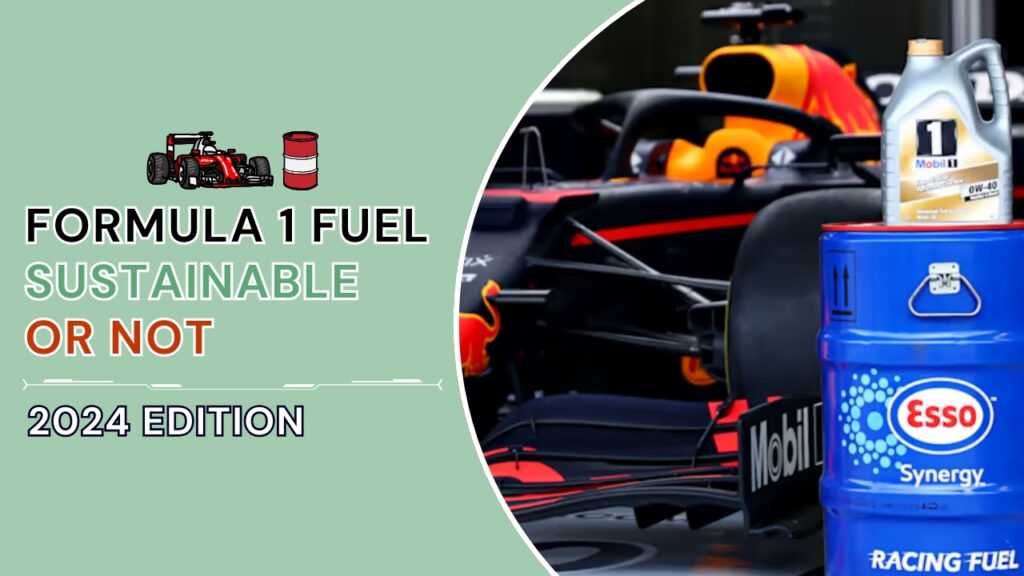In case you didn’t know, or simply missed the news, sustainable fuels are coming to Formula 1 in 2026. The first sustainably-powered Grand Prix is still nearly two years away. That raises a question about the current status of F1 fuel. How far is it from actually being called sustainable? The answer may surprise you.
Fuel currently utilised by Formula 1 drivers has been in use since 2022. Considering it’s relative novelty in the paddock, you may assume we are dealing here with ground-breaking technology. After all, Formula 1 made a name for itself by implementing countless revolutionary solutions over the years. This time, however, it is not the case.
Prior to 2022 Formula 1 relied on a fuel containing 5.75%, or, as claimed by the FIA, 4% of bio-components. Since then, the situation improved, albeit – perhaps to your surprise – marginally. Let’s have a look at the details.
F1 FUEL IN 2024
Fuel introduced in 2022 can be referred to as E10. Both “E” and “10” have a specific meaning. The former stands for ethanol, while the latter refers to its percentage in the entire mixture. Where is the aforementioned improvement, then?
Ethanol used for production of this fuel is considered second generation biofuel, i.e. sustainably obtained and not directly competing with food production.
CONTROVERSIES AND CRITIQUES
Formula 1’s Chief Technical Officer Pat Symonds described adoption of E10 fuel as an interim step before going all in on sustainable fuels. And while this fuel has a lower carbon footprint than its predecessor, it is pretty pointless to search for the voices that glorified its arrival. There was one person, though, that decided to sit on the other side of the fence.
In December 2021, when asked by Frankfurter Allgemeine Newspaper, he didn’t hold back. Of course, this story wouldn’t be complete without the one and only Sebastian Vettel.
It is neither sufficient nor in keeping with the times. I stand by my criticism. We have all the possibilities, we have the money, the resources, we could do very sensible things with it.
SUSTAINABILITY OF F1 FUEL – THE VERDICT
Although Vettel assessment of introducing E10 fuel to Formula 1 seems harsh at first, it absolutely adds up after having a closer look.
Firstly, E10 fuel, despite containing some portion of bio-based components, should not be classified neither as biofuel nor sustainable fuel. Naturally, it is more eco-friendly than fossil fuels, but it remains closer to this group rather than to low-carbon propellants.
Let’s follow this up with the availability and level of innovation.
Even at the time of the first F1 race on this fuel in 2022, the E10 was anything but a new addition to the market. In fact, as confirmed by multiple sources incl. BP, the E10 fuel is already widely used around the world, including across Europe, the US and Australia. In 2021, almost all petrol stations in the UK were offering E10.
READ NOW: WHY FORMULA 2 IS USING MORE SUSTAINABLE FUEL THAN F1?
F1 FUEL SITS BEHIND THE COMPETITION
Formula 1 underperforming on the fuel field wouldn’t be that drastic if it wasn’t for the progress achieved by other high-performing motorsport championships at about the same time. No, you didn’t mishear it.
While F1 went for E10 fuel and is still in the starting blocks when it comes to sustainable fuels, others were putting in some serious work. My plan for the following months is to uncover their achievements that have already brought impressive environmental benefits.
Add Sustainable Paddock to your tab and turn on notifications for a new content on my Instagram. The knowledge about the enormous potential and impact of sustainable fuels will blow your mind!
